Preview Panel
Unlike the Details View, the Preview Panel offers greater interaction with a selected asset while remaining within the list of search result items. This offers users a better opportunity for evaluating assets without losing a comprehensive view of relevant matches.
By clicking on the search result’s thumbnail, the Preview Panel is extended from the right-hand side.
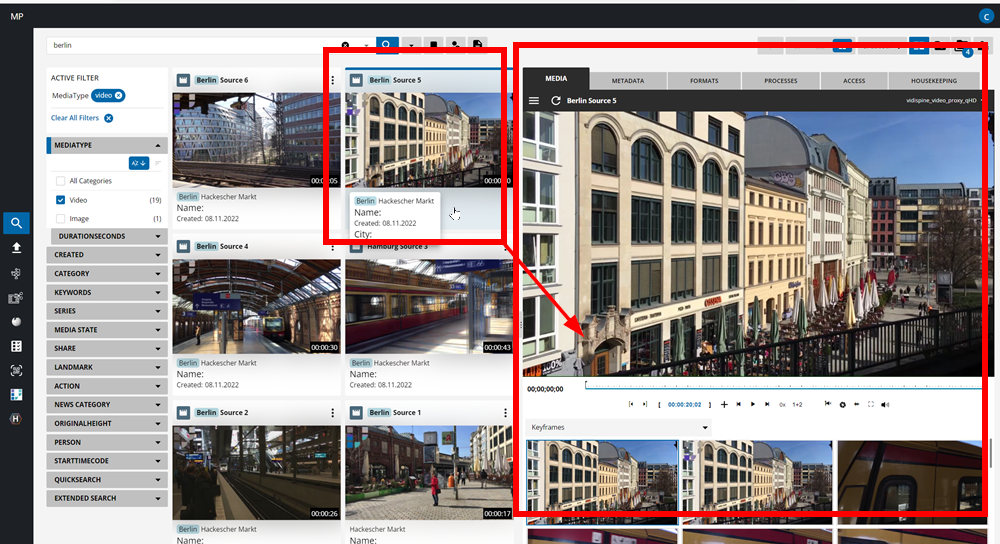
Click on the thumbnail to open up the Preview Panel.
In addition to the player, and respective player options, the Preview Panel offers users the possibility to jump between existing segment lists, and several of the tabs attributed to the Details View Details View .
Users should note that the space occupied by the Preview Panel can be changed, by extending the panel’s width - with all of its contents scaling accordingly.
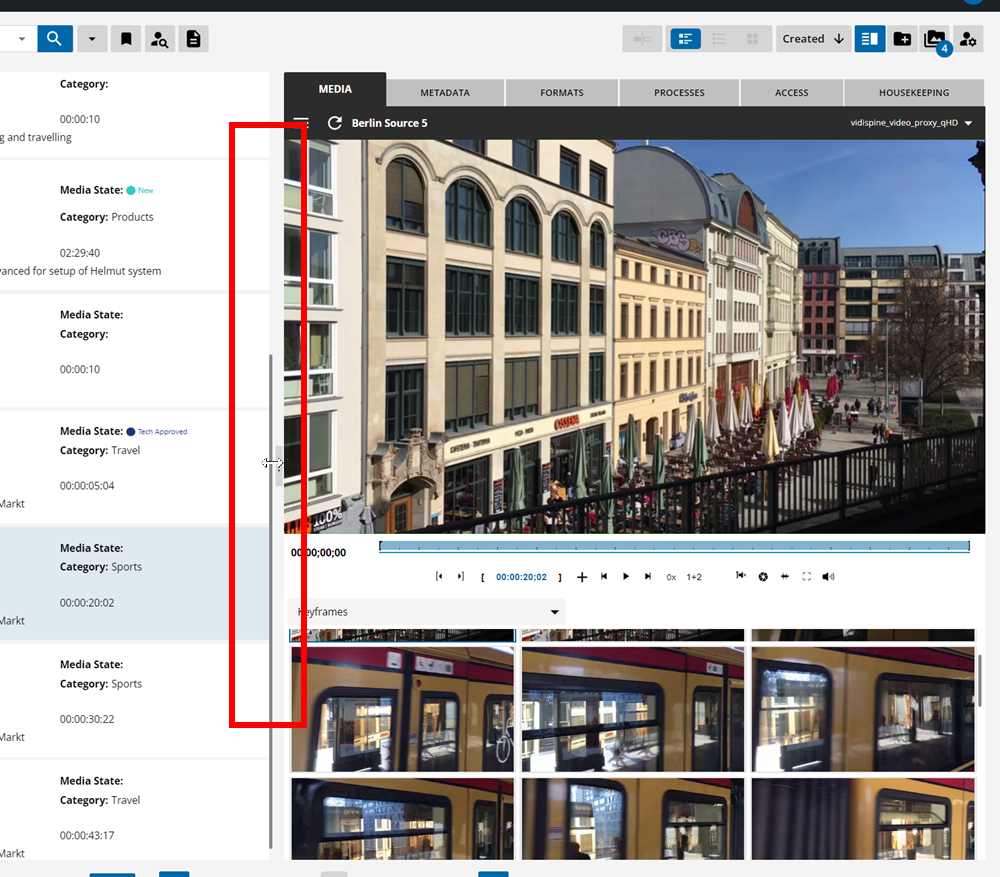
Readjust the size of the Preview Panel by extending the width.
Audio Channel Selection
Users can select which audio channels should be heard in the player. It supports up to 16 audio channels in media. Often those channels are used to store different versions of audio such as different languages, audio commentary or for atmospheric purposes. You can click on the audio track selection and choose which channels should be heard. It can be single mono channels, stereo pairs or multiple channels at the same time

Audio Waveform Preview for Videos in Player
A waveform preview of the audio channels of the proxy videos can be displayed directly in the player now. This allows the user to better judge IN and OUT points are set based on the audio signal.
This is particularly helpful, as cutting audio requires precise cutting and awareness of audio presence within the timeline. This becomes crucial when cutting speech content in audio.
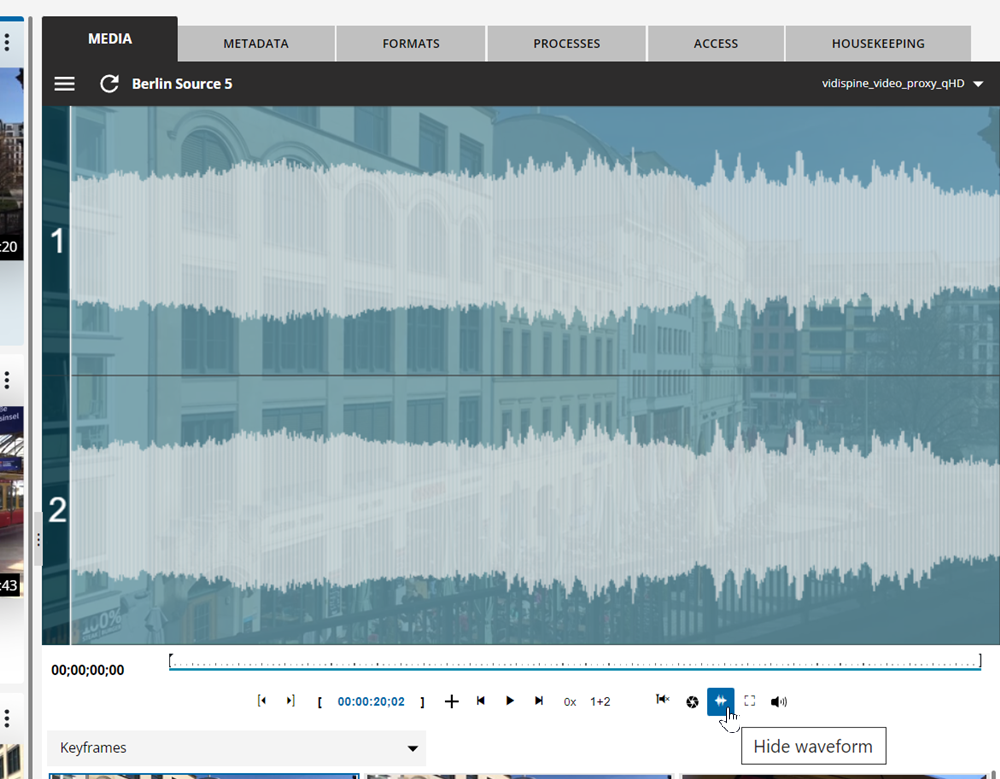
Timed Metadata
Metadata can have a general non-timed relation to an item or a collection but also reference to a certain point in time. This data can be simple logging up to complex sports data or come from a cognitive service. In order to display, create or adjust the data these timed values are displayed along with the video.
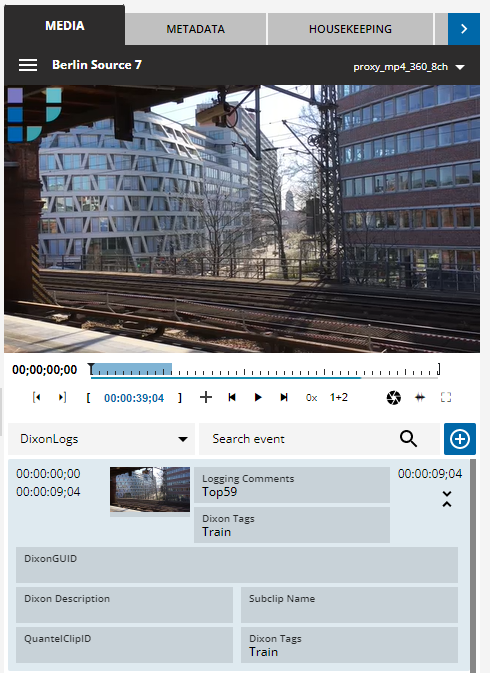
Viewing timed metadata in an item below the player.
A user can chose between and overview of metadata.

Viewing the metadata via overview.
Extend it:
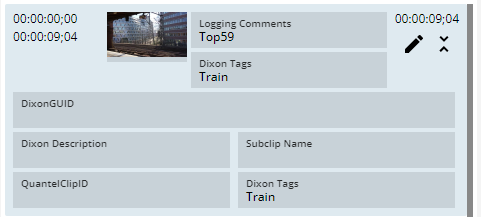
Viewing all of the metadata fields.
Edit it:
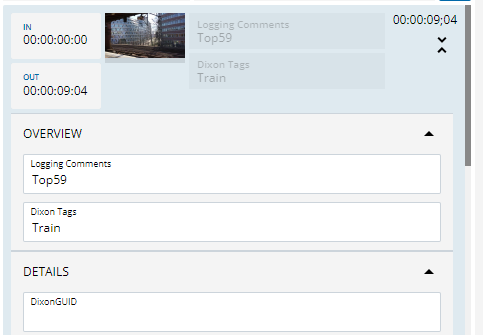
Editing the metadata fields.
Or create a new entry:
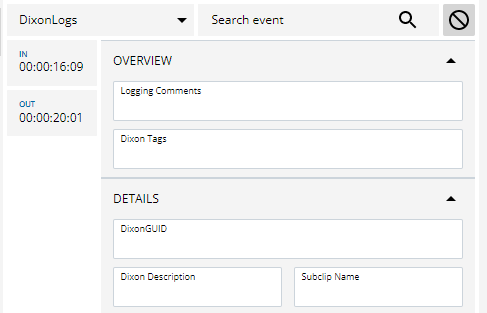
Creating a new timed metadata entry.
Source Sequence Display
Leverage source sequence information from Adobe Premiere and VidiEditor projects, enabling users to visualize the original source content of a rendered item directly within MediaPortal.
Source Sequences: When items are published, they retain sequence information from the original rendered timeline. This sequence data allows MediaPortal to reference and display the structure of the source material.
Timeline Visualization: MediaPortal provides a visual representation of the source timeline, displayed alongside the media player. This timeline view helps users navigate through different segments of the content with ease.
Metadata Handling: Metadata from the source material, such as royalty information or other important details, is extracted and displayed within the system. Configurable color coding can be applied to metadata, making it easier to identify key information.
Handling of Missing Source Sequences: If an item does not contain source sequence information, the system will not display the timeline or provide the segments dropdown. This feature is only available for items with properly configured source sequences.
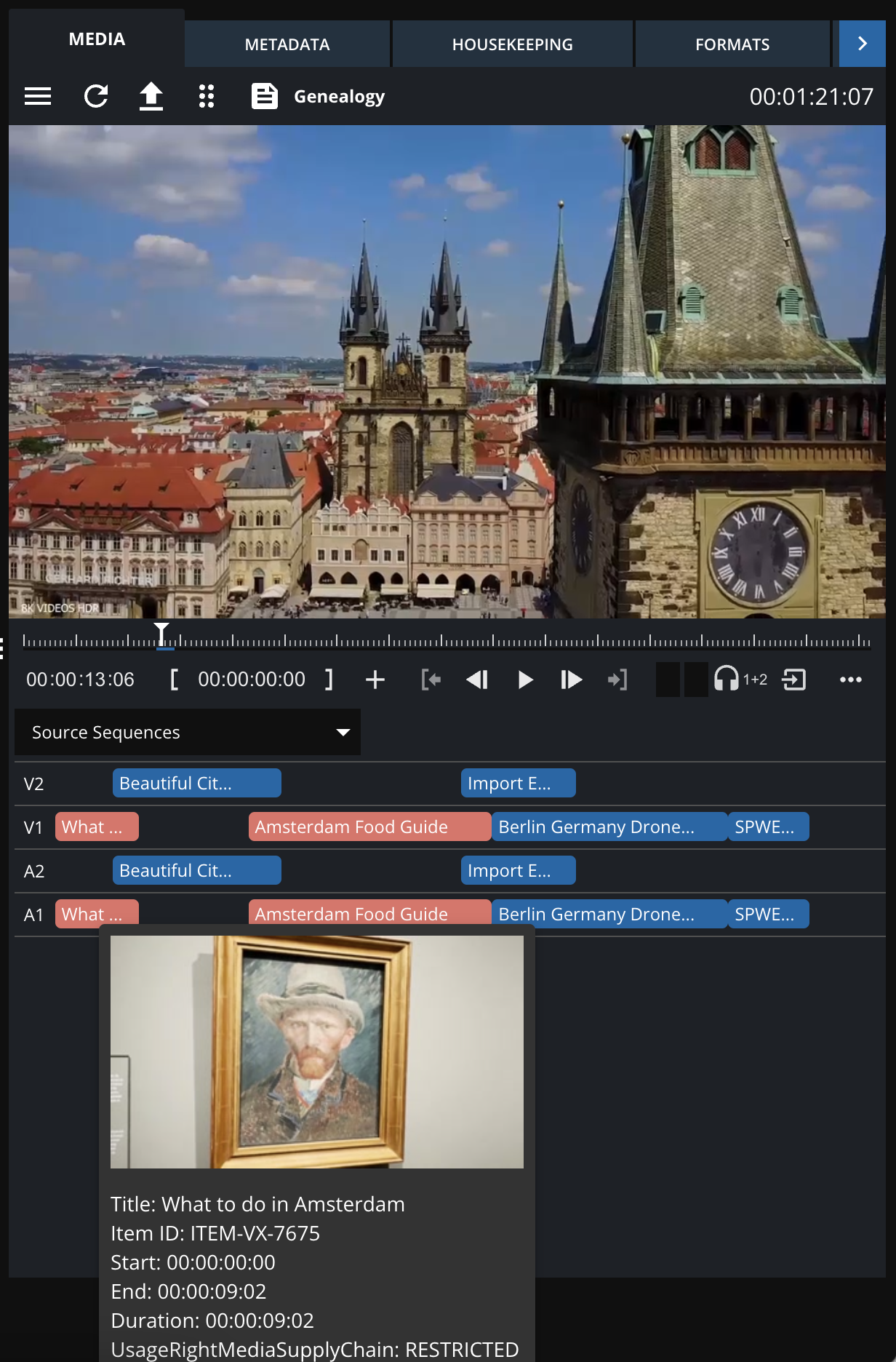
Segment display below the player.
Configuration can be done here https://vidispine.atlassian.net/wiki/x/eCzEi .
Camera Cards
The original structure of clips which were on a camera card can be preserved during upload in VidiFlow. This structure can then be seen in a special segment list. If a camera card item is loaded into the player, the user can then select between continuous and original time code of the clips.
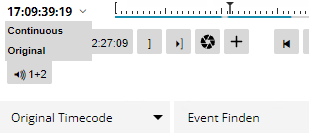
Selecting between original an continuous timecode in the player.
